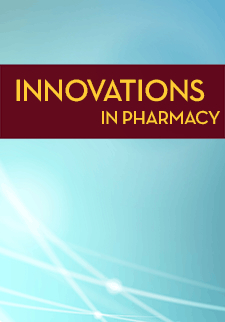Flip the Script: Changing Documentation Standards and Establishing Best Practices for Pharmacists in a Primary Care Setting
Nicole Domanski
University of British Columbia, Faculty of Pharmaceutical Sciences
Carmen Leung
University of British Columbia, Faculty of Pharmaceutical Sciences
DOI: https://doi.org/10.24926/iip.v15i2.6147
Keywords: Documentation, Primary Care, Pharmacy Clinic, Pharmacist
Abstract
Background
Documentation of clinical encounters continues to be a challenge to implement in practice and there is a lack of literature or evidence regarding documentation best practices in pharmacy. In order to inform documentation practices at an academic pharmacy clinic, a quality assurance (QA) initiative was implemented at the UBC Pharmacists Clinic (Clinic).
Goals:
The goal of this QA initiative was to determine what facilitators and barriers existed for the pharmacists in a primary care setting and improve the efficiency of consultation note writing.
Description:
Phase 1 conducted an online survey among Clinic pharmacists to assess each clinician’s documentation practice at baseline. Phase 2 implemented new interventions that could advance these skills. There were four main interventions introduced: 1) revised consultation note templates, 2) a documentation “checklist” to standardize expectations for documentation, 3) a “decision tree” to guide what type of note should be sent following consultations, 4) a documentation “guide” providing tips and examples to improve writing skills and 5) a peer-feedback workshop, where clinicians exchanged consultation notes, provided 1:1 feedback and shared main learning outcomes in a group discussion. During Phase 3, pharmacists re-answered the same survey questions 10 months later. This allowed for a direct comparison of documentation practices and skills before and after the interventions.
Effectiveness:
After the interventions, pharmacists reduced the time to complete their notes by nearly 14 min (from 48 to 34 minutes). In addition, the Clinic has since changed their approach to documentation by starting consultation notes with the clinical assessment and recommendation, followed by subjective and objective information, as opposed to the traditional SOAP format that the previous template followed. The revised note structure resulted in an increased uptake of template use from 37% to 100%. Furthermore, prior to the interventions and workshop, the majority of pharmacists ranked writing consultation notes as the most burdensome aspect of their daily workflow. Afterwards, the level of burden in writing consultation notes reduced significantly. Based on the results of the surveys as well as feedback acquired during this process, the traditional format of the Clinic’s consultation note template was permanently changed, to allow for the most important element, the recommendations, to be documented first. These findings can be used to inform how students are taught documentation and improve the quality of documentation by pharmacists in team-based or primary care settings.



